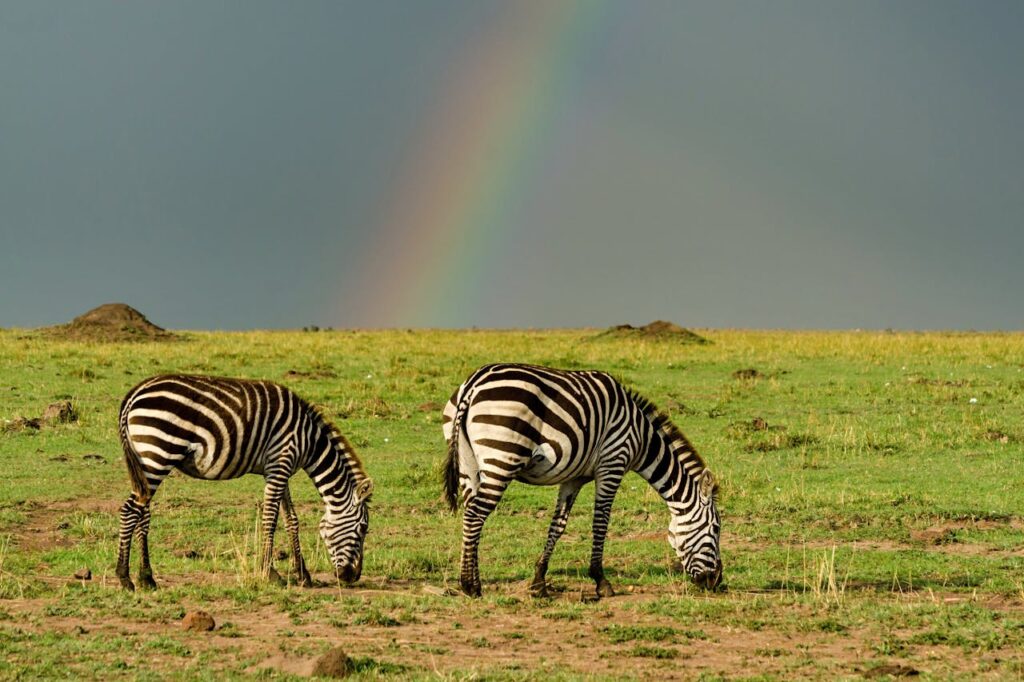Kenya, a land of unparalleled natural beauty and ecological diversity, offers a safari adventure that captivates and exhilarates. As the birthplace of the modern safari, Kenya provides a window into the awe-inspiring world of wildlife, dramatic landscapes, and vibrant cultures. This essay delves into the essential elements of a safari in Kenya, focusing on where to go, what to see, and what to expect, to help travelers fully appreciate the grandeur of this remarkable destination.
Where to Go
Kenya’s landscape is dotted with an array of national parks and reserves, each offering its own unique safari experience. The following are some of the premier destinations:
Maasai Mara National Reserve
The Maasai Mara National Reserve stands out as one of Kenya’s most iconic safari destinations. Located in southwestern Kenya, this reserve is famed for its annual wildebeest migration, one of the most spectacular wildlife events on the planet. The Mara’s open, grassy plains are teeming with life, from prides of lions to herds of elephants. The reserve’s vast savannahs provide the perfect setting for game viewing, with expansive vistas and an abundance of wildlife. During the migration season, from July to October, the Mara becomes a hub of activity as millions of wildebeest, zebras, and gazelles traverse the plains, followed closely by predators such as lions and hyenas.

Amboseli National Park
Situated in southern Kenya, Amboseli National Park is renowned for its large herds of elephants. The park lies at the base of Mount Kilimanjaro, Africa’s highest peak, offering breathtaking views of the snow-capped summit. Amboseli’s swamps and open plains are home to a significant population of elephants, which can be observed in their natural habitat. The park also supports other wildlife, including lions, leopards, and cheetahs. The combination of diverse wildlife and stunning landscapes makes Amboseli a must-visit destination for safari enthusiasts.
Samburu National Reserve
In the northern part of Kenya, Samburu National Reserve offers a safari experience unlike any other. Known for its unique wildlife species, Samburu is home to the reticulated giraffe, Grevy’s zebra, and Somali ostrich. The reserve’s semi-arid environment and rugged terrain create a distinctive setting for wildlife viewing. Visitors may encounter rare species not commonly found in other parks, making Samburu a fascinating destination for those seeking to see unusual and elusive animals.
Tsavo National Park
Kenya’s largest national park, Tsavo National Park, is divided into Tsavo East and Tsavo West. Located in southeastern Kenya, Tsavo offers a diverse array of landscapes, from arid plains to lush riverbanks. The park is known for its large herds of elephants, with some of the largest tuskers in Africa roaming its vast expanses. Tsavo also hosts lions, leopards, cheetahs, and a variety of other wildlife. The park’s size and diversity ensure that each safari experience is unique, with opportunities to explore different habitats and encounter a wide range of animals.
What to See
A safari in Kenya provides the chance to witness some of the most iconic and impressive wildlife on the continent. Key species to look out for include:
The “Big Five”
- Lions: As the apex predators of the savannah, lions are a highlight of any safari. They can often be seen lounging in the shade or engaging in social behaviors. The Maasai Mara, in particular, is renowned for its healthy lion population.
- Elephants: Kenya is home to some of Africa’s largest elephant herds. Amboseli is especially famous for its elephants, offering spectacular sightings against the backdrop of Mount Kilimanjaro. Elephants are also commonly seen in Tsavo National Park and the Maasai Mara.
- Leopards: Leopards are elusive and solitary, making them a thrilling sighting for safari-goers. They can be found in various parks, including the Maasai Mara and Samburu, often resting in trees or stalking prey.
- Rhinoceroses: Both black and white rhinoceroses are present in Kenya, with protected areas such as Maasai Mara and Tsavo offering opportunities to see these magnificent creatures. Conservation efforts in Kenya are critical to protecting rhino populations.
- Buffalos: The African buffalo is a common sight in Kenya’s national parks. Known for their strength and formidable appearance, buffalos are often seen grazing in herds across the savannahs.
Other Notable Wildlife
- Giraffes: Kenya’s giraffe populations include several species, such as the Masai giraffe and the reticulated giraffe. Their long necks and graceful movements make them a favorite among visitors. Giraffes are commonly observed browsing on acacia trees in the Maasai Mara and Samburu.
- Zebras: The striking black-and-white stripes of zebras make them a highlight of the safari experience. Herds of zebras are frequently seen in the Maasai Mara and Amboseli, often mingling with wildebeest and gazelles.
- Cheetahs: Known for their incredible speed, cheetahs are a thrilling sight on safari. The Maasai Mara is particularly renowned for cheetah sightings, where visitors may observe these agile predators in action.
What to Expect
Embarking on a safari adventure in Kenya involves several key considerations to ensure a memorable and enjoyable experience:
Accommodation
Kenya offers a wide range of accommodation options for safari-goers. These range from basic campsites to luxurious lodges. Many lodges and camps are situated within or near national parks, providing convenient access to wildlife viewing. Accommodations vary in comfort and amenities, from simple tents to high-end lodges with fine dining and private game drives.
Transportation
Safaris in Kenya typically use 4×4 vehicles equipped to handle the rugged terrain of the national parks. These vehicles offer excellent visibility for wildlife viewing and are driven by experienced guides. Some safari experiences also include walking safaris or hot air balloon rides, providing unique perspectives of the landscape and wildlife.
Weather
Kenya’s tropical climate means temperatures generally range from 20°C to 30°C year-round. The country experiences two rainy seasons: from March to May and from October to December. Despite the rain, safaris can be enjoyed throughout the year. Visitors should pack light, layered clothing, a hat, sunscreen, and insect repellent to adapt to varying weather conditions.
Safety
Safety is paramount on a safari. Visitors should follow their guide’s instructions, maintain a safe distance from wildlife, and avoid feeding or touching animals. Additionally, it is advisable to take antimalarial medication and use insect repellent to prevent mosquito bites.
Cultural Experiences
Kenya is home to diverse cultures, including the Maasai, Samburu, and Kikuyu. Cultural tours and homestays offer insights into these communities, their traditions, and daily life. Engaging with local cultures provides a richer understanding of Kenya’s heritage and enhances the overall safari experience.
Conclusion
A safari adventure in Kenya offers an extraordinary opportunity to witness some of the world’s most iconic wildlife in their natural habitat, explore stunning landscapes, and engage with vibrant cultures. Whether marveling at the Great Migration in the Maasai Mara or observing elephants against the backdrop of Mount Kilimanjaro in Amboseli, Kenya’s safari experiences are bound to leave a lasting impression. With careful planning and an open mind, travelers can ensure a safe, enriching, and unforgettable safari adventure. Kenya’s rich tapestry of wildlife and culture makes it a destination that every traveler should experience.

